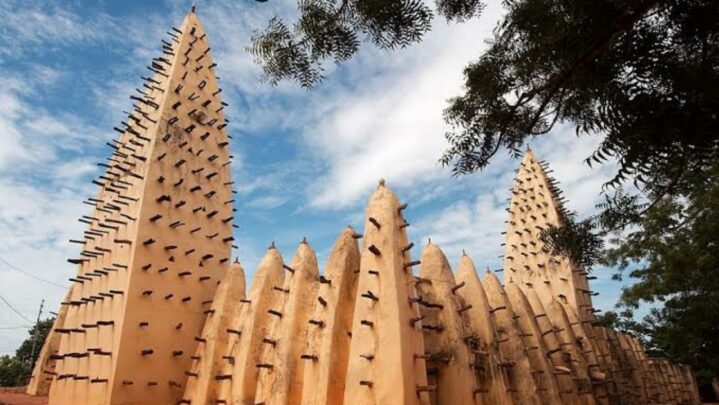Mosques are distinguished by their architecture, which includes a minaret, a dome, arches, and mosaics or stucco ornamentation. The Arabs brought these design features with them as they moved and conquered distant lands through conquest.
Mosque architecture, on the other hand, corresponds more to vernacular design dictated by local skills and material availability in locations where Islam was spread more gradually by merchants and traders.
A distinct kind of mosque has emerged in the Sahel and Sudanian grasslands of West Africa. Mud bricks are used to construct these mosques, which are strengthened with massive wooden logs and support beams that protrude from the wall face, giving them a fortress-like aspect. They span a large area across northern Africa, from Senegal to Sudan, as well as Ghana and the Ivory Coast.
These beautiful wooden stakes, known as Toron, are utilized as scaffolding when the surface is renovated every year. Inside, sand is used to cover the floor, which is then covered with prayer mats. The only source of illumination is natural light coming in via holes cut in the ceiling. The interior is devoid of decoration except for huge pillars supporting the ceiling and their arches, so as not to disturb the worshipper.
The Great Mosque of Djenné in Mali is the most well-known example of this style of building. This massive mosque, with its nearly ten-foot-high platform, towers over the marketplace in which it stands.
Regardless of its originality, the Djenné Mosque has become nearly iconic in terms of West African mosque construction, and several village mosques across the continent have attempted to replicate it, albeit on a smaller scale. Each mosque, on the other hand, has its own particular personality.
Also Read: Joining The Indian Air Force After 12th: All You Need To Know





